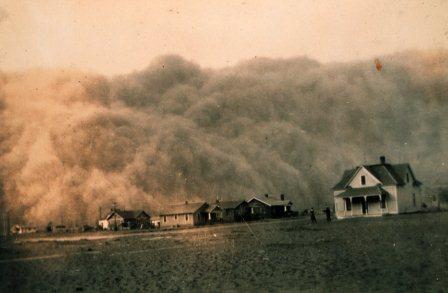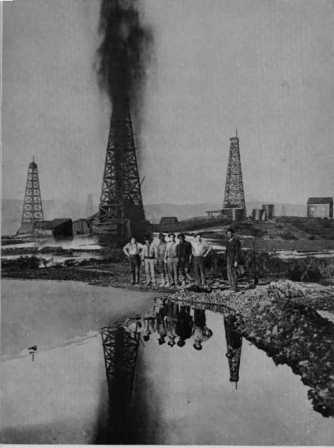The Biggest Eco-Disaster?
The Gulf: Biggest Ecological Disaster?
President Obama called it “the worst environmental disaster America has ever faced.”
Yes, it’s very bad. But is it the worst? The fact is, this is not just a one-off, freak catastrophe. It’s part of an ongoing pattern of greed and carelessness that’s produced situations that were just as bad – maybe worse. Here are a few of them:
 The Dust Bowl
The Dust Bowl
The Dust Bowl of the 1930s was one of the worst ecological disasters in the world – ever. The scene was set when irresponsible farming practices across the Great Plains in the early 20th Century stripped away the grasses and plants that held the topsoil and the moisture in place.
Then came a drought.
Then came high winds that whipped all that dry soil into the air, burying (literally) entire homes, choking humans and other animals.
Few people back east took much notice … until the billowing clouds of dust from thousands of miles away blew into New York and Washington DC. A congressional hearing had to be stopped when a dust storm blew into the House of Representatives.
By the end of the 1930s, two million people had evacuated the Great Plains states, multiplying the effects of the Great Depression.
The dust didn’t settle for 10 years.
 The Lakeview Gusher
The Lakeview Gusher
When it comes to oil spills, the worst in history was probably the Lakeview Gusher, which flowed into California’s San Joaquin Valley, uncapped and untamed, at a rate of 18,000 barrels a day, for 18 months, starting in March 1910.
The Massacre of the Bison
And there was the killing of millions of bison, which wasn’t even an “accident” … and the cutting down of the great forests … and the ongoing poisoning of the waterways and the oceans – a slower-motion, but much greater disaster than all of the above put together.
All in all, we have yet to see where the Gulf oil spill fits into the pantheon of human ecological folly.
Coming soon: The Northern Gateway pipeline project
If approved, The Northern Gateway pipeline project will carry maybe half a million barrels of crude oil a day from the Alberta tar sands to the port of Kitimat on the west coast of Canada. The oil will then be loaded into tankers that will have to weave their way through the narrow inlets of the Great Bear Rainforest before heading out to sea.
More than 200 oil tankers a year will pass through this fragile coastal route, delivering tar sands oil to world markets.
And a few others:
The Ixtoc 1 Oil Spill, 1979, in the Gulf of Mexico off the Mexican Coast. 181 million gallons. Uncounted animals.
The Bhopal, India, Gas Leak, 1984. 15,000 people dead. Uncounted animals. Union Carbide paid $470 million to the Indian government.
The Chernobyl Radiation Leak, 1986. At least 56 dead and 4,000 cancer cases. Uncounted animals. The whole region still uninhabitable.
The Love Canal Toxic Contamination, 1978. At least 220 families evacuated, high numbers of miscarriages, at least five birth defects. Countless animals killed or mutated. The land is permanently uninhabitable.
